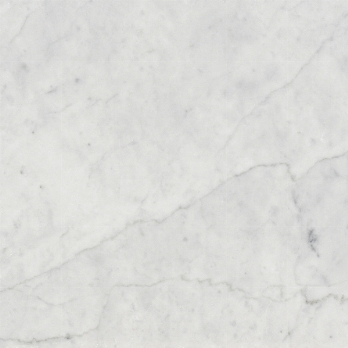Bianco Carrara C
marble
Carrara, Italy
indoor / outdoor
ApplicationPetrografic name (according EN 12407): Marble
Category: white
colour: White
Macroscopic description: A fine-grained, compact lithotype, pearly white verging on light grey in colour with dark grey micrometric- to millimetric-sized veins with a mainly subparallel orientation. Millimetric, subrounded patches are also present and some rare surface pores can be observed.
Technical data provides a frame of reference only. As stone is a product of nature, up to date testing to determine specific physical qualities should be repeated for each major project. We decline any responsability for the mis-use of this data, since said data is sourced from the quarry.
Physical mechanical characteristics
| STANDARD | U.M. | MEAN VALUE | ST. DEV. | |
 EN 13755-08 EN 13755-08 |
Water absorption at atmospheric pressure | % | 0,8 | 0,01 |
 EN 1936-07 EN 1936-07 |
Apparent Density | KG/m3 | 2710 | 4,1 |
 EN 1936-07 EN 1936-07 |
Open porosity | % | 0,2 | 0,04 |
 EN 12372-07 EN 12372-07 |
Flexural strength | |||
| (in natural conditions) | MPa | 17,3 | 1,8 | |
| (EN 12371-03 exposed to 48 frost cycles | MPa | 14 | 1,3 | |
 EN 1926-07 EN 1926-07 |
Uniaxial compressive strength | MPa | 101,6 | 13,9 |
 EN 14231-04 EN 14231-04 |
Slip resistance (honed finishing) | |||
| (dry) | USRV | 56 | 1,8 | |
| (wet) | USRV | 32 | 1,8 | |
Block and slab characteristics
Average size of blocks: 3,00 x 1,70 x 1,70m.
Slabs are prefarably cut against the grain or perpendicular to the grain, i.e. the hard way and the easy way.
 Cutting of blocks
Cutting of blocks  Surface lavoration
Surface lavoration
 Cutting of blocks
Cutting of blocks  Surface lavoration
Surface lavoration
Microscopic description according to EN 12407 e EN 12460
| An isotropic metamorphic lithotype (that is anisotropic where the veins occur) composed of subeuhedral/euhedral calcitic granules with straight/sutured grain boundaries that are interlobed in places. The grain size is seriate from 60 to 700 Ám, in contrast with areas of an average size of 200 Ám and areas of an average size of 650 Ám. There is also rare straight layering, composed of calcitic blasts varying in size between 60 and 150 Ám, opaque minerals (pyrite and micrometric magnetite) and iso-oriented acicular muscovite following the orientation of the veins. The same mineral phases may be spread throughout the crystalloblastic mosaic with trace amounts of quartz. |




